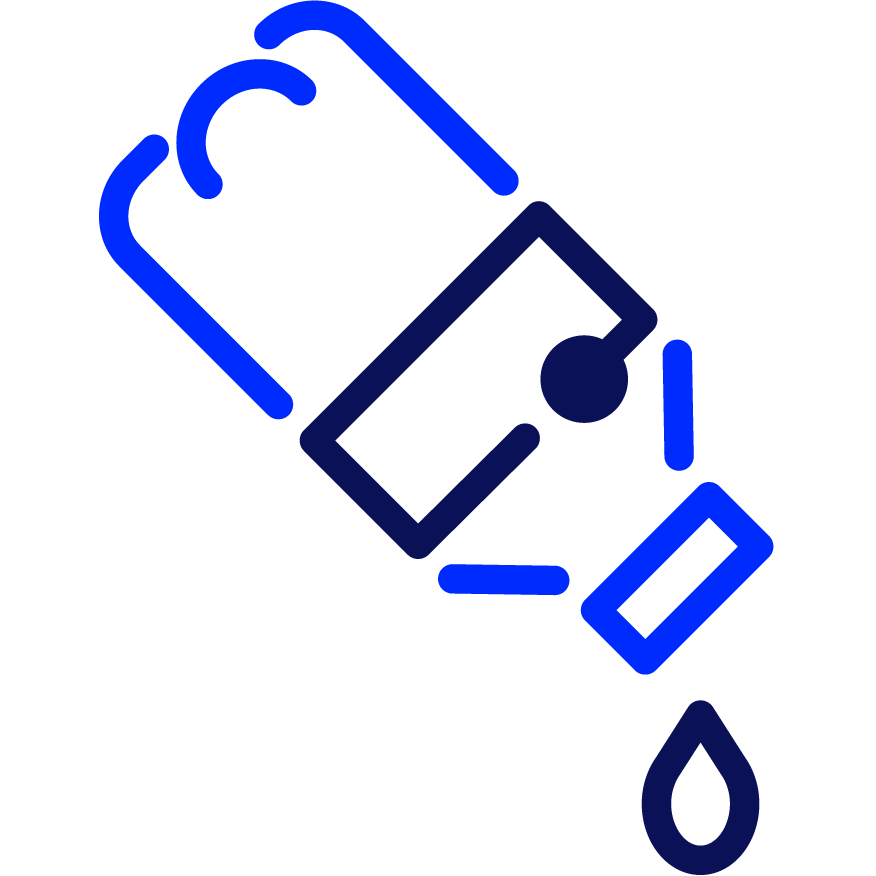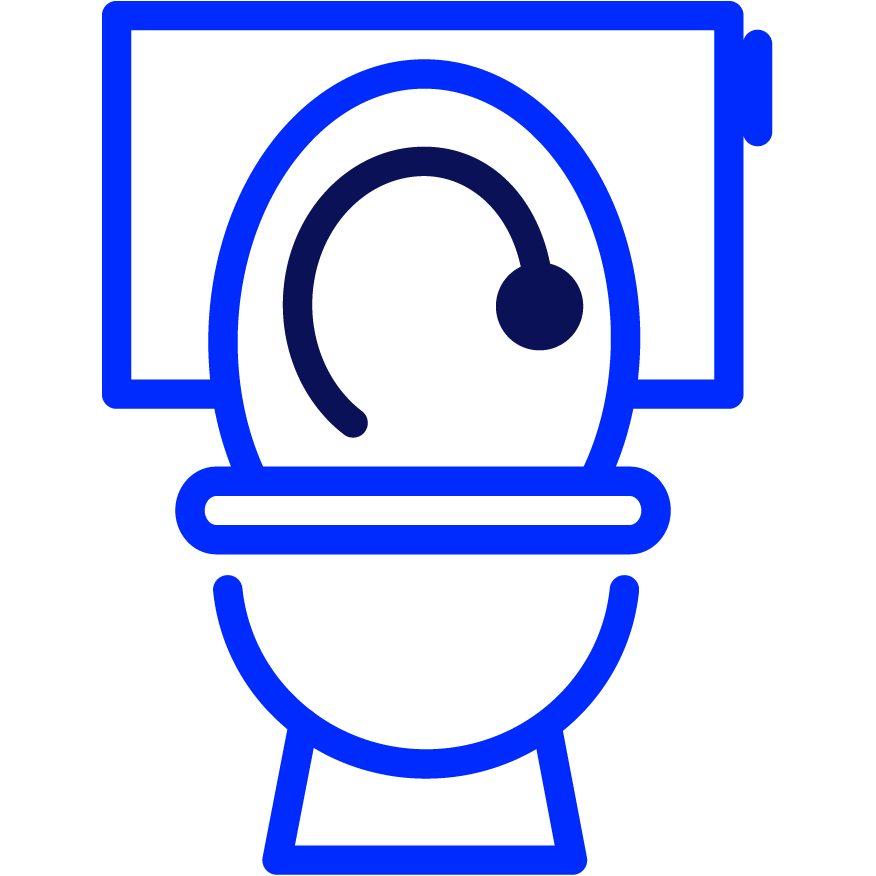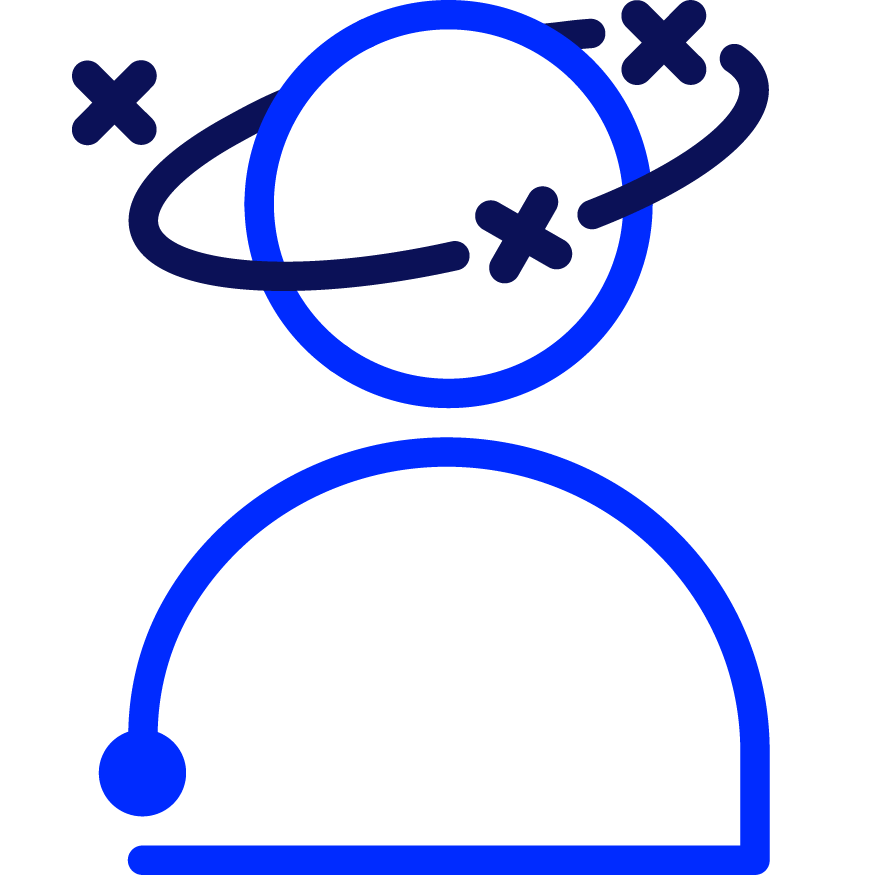High blood sugar (hyperglycemia)
What is high blood sugar?
Having too much sugar in your blood is called high blood sugar, or hyperglycemia.
The target blood sugar range for most people living with type 1 diabetes (T1D) is 70 to 180 mg/dL. Blood sugar is sometimes above this target range during the two hours following meals.
Causes of high blood sugar include:
- Not taking enough insulin for the carbs you eat or drink
- Stress
- Illness
- Medications (like steroids)
- Hormone changes, including puberty, menstruation, and pregnancy
- Competitive sports and certain sports like weightlifting
- Caffeine
Hyperglycemia that occurs when there is not enough insulin in the body can lead to diabetic ketoacidosis, or DKA.
Signs of high blood sugar

Thirst

Frequent urination

Trouble seeing or concentrating
Signs and symptoms of long-term high blood sugar include:
- Infections, including yeast infections
- Fatigue
- Unexplained weight loss
- Blurred vision
- Cuts or sores that do not heal
Persistent hyperglycemia can also contribute to long-term complications that affect the eyes, heart, kidney, and nerves.
How to treat high blood sugar
High blood sugar is treated with insulin. Every person with T1D has a personalized insulin plan developed in partnership with their diabetes care team.
If blood sugar is above 180 mg/dL, but below 240 mg/dL three hours after the last meal/snack and three hours after the last dose of insulin:
- Check insulin pump or infusion site for blockages.
- Take a correction dose of insulin.
- Drink water and rest.
- If blood sugar remains high, contact your healthcare provider.
If blood sugar is above 240 mg/dL three hours after the last meal or snack and three hours after the last dose of insulin:
- Check for ketones in blood or urine. If none are present, follow the steps above.
- If ketones are trace or small, treat according to the advice provided by your diabetes care team. If ketones are moderate or large, follow the steps above and contact your diabetes care team.
- If moderate or large ketones are present and the person has symptoms of DKA, they could be experiencing a medical emergency, be in DKA, or be dangerously close to it. Call their diabetes care team and emergency contact immediately. If they cannot be reached, call 911 and stay with them until emergency help arrives.
What is a correction dose?
A correction dose is insulin you take to lower your blood sugar when it is too high. Your healthcare provider will help you figure out the right correction dose for you, depending on your weight, how long you have had T1D, what type of insulin you take, and how you take it.

Diabetic ketoacidosis (DKA)
Diabetic ketoacidosis, or DKA, is a medical emergency and must be treated immediately.
DKA happens when your cells can’t get fuel from the sugar in your blood and break down fat instead. This creates ketones, which are acids produced in your liver and released into your blood when your body breaks down fat for energy. When ketones build up, it leads to too much acid in the blood (acidosis).
The risk for ketones and DKA is higher during illness and when insulin doses are missed, or infusion sites are occluded. Insulin is essential to help the body clear ketones.
Signs of DKA
- Ketones in the urine or blood
- Extreme exhaustion or fatigue
- Nausea, vomiting, or abdominal pain
- Difficulty breathing
- Fruity odor on the breath
- Confusion or difficulty paying attention
- Loss of consciousness
Be prepared to check for ketones
It is important to have a way to check for ketones, either using urine test strips or blood test strips with a ketone meter.
- Have a blood or urine ketone test kit on hand.
- Check expiration dates on kits and discard expired test strips.
- Read the package when there isn’t an emergency to learn how to use it. Ask your diabetes educator for support.
- To make sure you understand the instructions, do a sample check-in consultation with your healthcare team during a clinic visit.
Low blood sugar (hypoglycemia)
Having too little sugar in your blood is called low blood sugar, or hypoglycemia. Learn about the symptoms and treatment of low blood sugar.
T1D Resource Library
What you need to know about navigating life with type 1 diabetes, including insurance, school, mental health, pregnancy, and more.